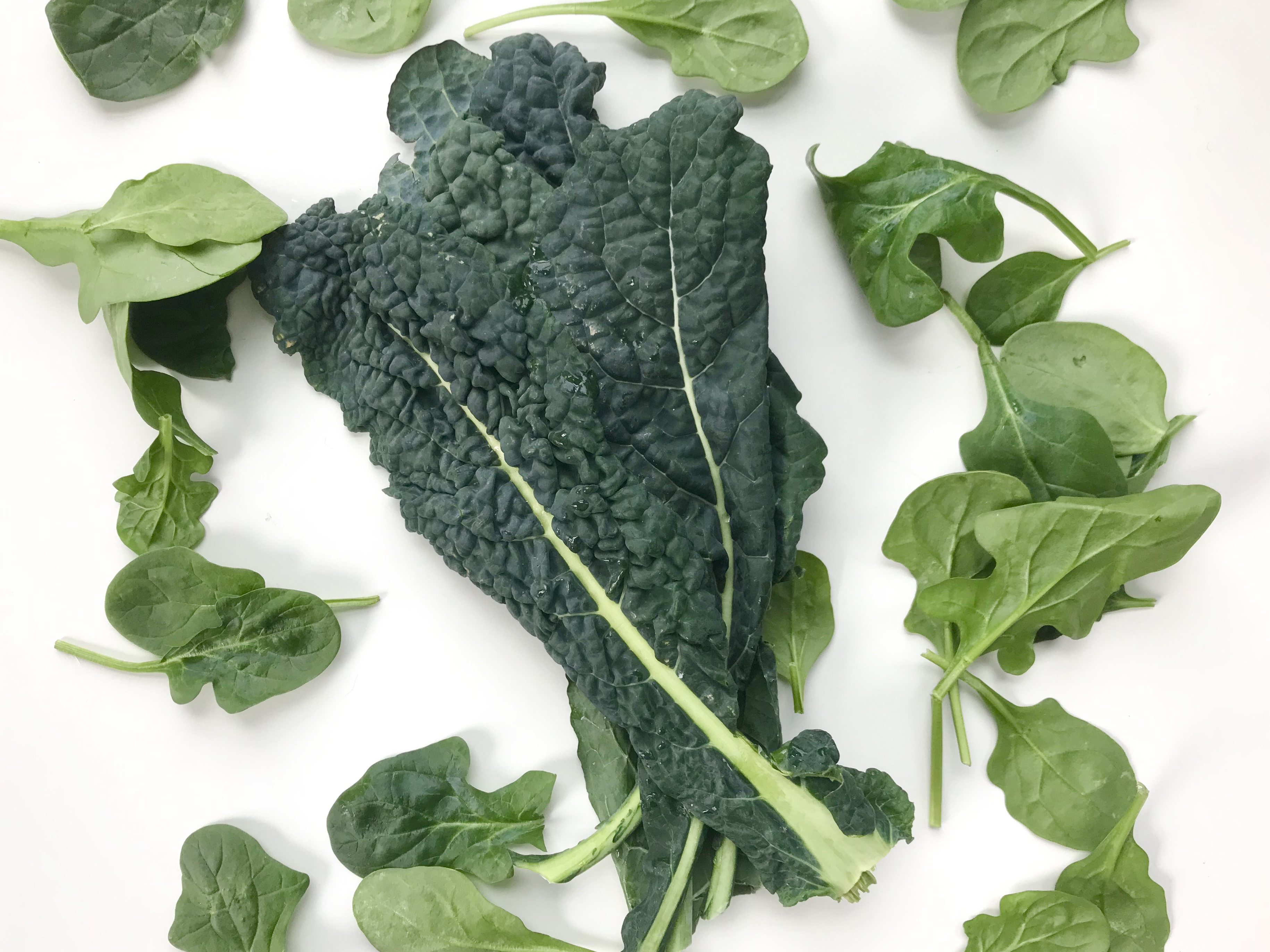Spinach vs. Kale: Which is the Greater Green?
The Dietary Guidelines for Americans recommends five servings of vegetables each day, with at least one of those servings coming from leafy green vegetables. Vibrantly colorful leafy greens, such as kale and spinach, contain vitamins, minerals, and phenolic compounds that may help protect against the risk of developing chronic disease. Both spinach and kale are known to be nutrient powerhouses, but is one more valuable to include in our daily diet?

Kale vs. Spinach: The Full Nutrient Breakdown
So, which is healthier?
Per 100 grams, spinach is higher in iron, magnesium and folate, which is especially important for women who are pregnant or planning for pregnancy. Kale provides more vitamin A, vitamin C and calcium. Both spinach and kale are good sources of fiber, which promotes heart and gut health while helping manage chronic diseases such as diabetes and obesity.
Many are quick to think that kale is superior to spinach because of all the buzz it has received in recent years, but in reality, both have essential vitamins and minerals that play a role in healthy body functioning. In fact, research continues to show the importance of dietary patterns over intake of specific nutrients. For health promotion, your diet should include a variety of colorful fruits and vegetables as well as fiber-full whole grains and lean protein sources.
The bottom line: Incorporate both kale and spinach into your diet to reap the most health benefits! Though one leafy green may provide a bit more nutrient power than the other, they both provide an essential dose of important vitamins and minerals.
How to increase your intake
To increase kale and spinach intake, it is important to know how to prepare leafy green vegetables as well as how to properly store them so they don’t go to waste!
Purchasing: You can buy both spinach and kale at your local grocery store or farmer’s market. At the grocery store, you will find it in the produce section either packaged (already washed and ready to eat!) or available for purchase by the bunch. Remember to check the expiration date of packaged bags/containers and make sure leaves are not limp, soggy, or yellow when you purchase. Local farmers markets typically offer leafy greens throughout the year.
Storing: Leafy greens stay fresher longer if they are rinsed in cool water upon purchasing. Wrap greens in a paper towel or tea towel and refrigerate in a container or sealed plastic bag to extend the life of leafy greens. Properly stored raw kale and spinach should last 5-7 days in the refrigerator, while cooked kale and spinach last 3-5 days. Kale and spinach can be stored in the freezer for 10-12 months.
To freeze leafy greens: Clean thoroughly and remove stems, if desired. Blanch for 2 minutes in boiling water and chill quickly in ice cold water. Drain off excess moisture and package in airtight containers or freezer bags and freeze immediately
Preparing: Before cooking kale, remove the tough, middle stalks with a knife or by pinching at the base of the stalk and sliding fingers upward to detach. Massage kale with olive oil for a minute or two to soften the texture, especially if eating raw. Spinach is ready to go after being rinsed!
Cooking: Leafy greens cook quickly, which makes it especially easy to add them to any hot dish. Just remember that spinach will wilt down significantly, so you may find yourself adding more than you originally thought you would need.
Need more inspiration? Check out our blog post: Five Ways to Eat More Greens!
Try these FEED-approved recipes:
- Chocolate Spinach Muffins
- Spinach Potato Pancakes
- Kale Salad with Papaya Vinaigrette
- Black Bean, Sweet Potato, and Kale Quesadilla
- Spinach Veggie Burger
- Kale Chips
Research for this post was provided by dietetic intern and RD-to-be, Alex Forsythe.

